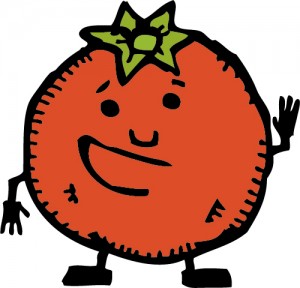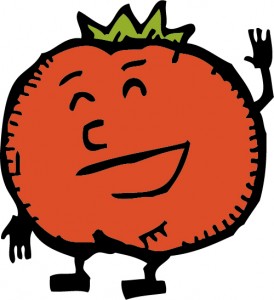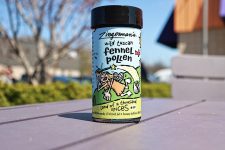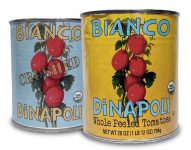You Say “Tomato,” I Say “Delicious!”
Cornman Farms bounty makes its way to Zingerman’s Roadhouse menus!
Since back in the snowy days of winter, Mark Baerwolf and his team have been planning and preparing for this year’s exciting garden season! Seed planting began in March, with special emphasis on tomatoes and peppers.
We like to think of our tomatoes and peppers as examples of wonderful slow foods. They grow for a very long time before they are harvested, turning the summer’s sun, rain, and rich soil into a product that has incredible flavor.
Our method of growing can best be described in a phrase that we’ve borrowed from the garden writer Elliot Coleman, “beyond organic” (more info here). We’re using the organic principles of feeding the soil and not the plant. A fall cover crop brings nutrients to the soil and a spring spreading of compost adds another layer of strength and disease resistance.
Throughout the fall and winter, we’ve been collecting compost at record levels, from the Zingerman’s Roadhouse, the Zingerman’s Deli and we recently added Food Gatherers. Everyone else’s garbage is our gold! It adds up to a mixture of over 3500 lbs./week of organic material, mixed with high carbon straw and bedding material. We water and weed, but we use no chemicals or pesticides on our plants.
Some tomato varieties are chosen specifically for roasting. We select these roasting varieties for their size (4 oz. or larger) and most importantly for flavor. We want a balance between sweet and tart with a small seed cavity and low moisture. These roasters tend to reduce to the best balanced flavor and their texture makes the final sweetness pleasing without being over the top. The different paste varieties like Italian heirlooms, Opalka, Gilbertie, and German Johnson are the ones that we turn into roasted tomatoes.
Others are best enjoyed fresh and raw, often straight off the plant. We checked in with Mark to see what he and the folks have planned for us this summer:
“I’m really pleased with quality of tomato transplants we’ve got this year; it’s looking better than ever because of new seed starting mix from a Michigan company called Dairy Doo. That and Chef Alex’s greenhouse addition have made a huge difference for us. Things get even better in 2014 as we’ll be able to sell a very select few of our transplants for folks to plant in their home gardens. I’m also excited about growing several rows of Brandywines and Mortgage Lifters in rows with no plastic mulch, side dressed with goat barn straw. These are two varieties I love, but they have not liked the very intense mid-summer heat (90 to 100 degree days). If I can keep their roots cooler with goat straw they will be happier plants and we will reduce our plastic use by over 10%. There’re a lot of other varieties I can’t wait to try. I always love the Cherokee Purple tomatoes for their salty depth of flavor and deep purple, bruise-y color. This year, we’re trialing two other Cherokee toms, Black Cherokee and Cherokee Green. We’ve also acquired seeds of several other very rare tomatoes that I can’t wait to try: Paul Robeson, a dark-skinned, big, ugly and delicious tomato and Stump of the World (from the breeder who basically saved the classic Brandywine from extinction—this is also his own personal favorite). We’ve also got Ananas Noire (a green variation of the superb Pineapple tomato). Ultimately I can’t wait for a good summer tomato, warm from the sun, juice dripping down my shirt. They should start trickling into the Roadhouse by the 2nd week in July and then the red flood begins for real in August and lasts into the first week of October if we’re lucky.”

Thanks Mark!




Zingerman’s Art for Sale